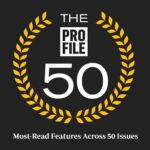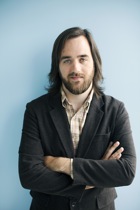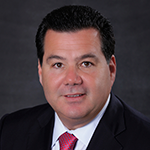Rodney Scaife, global chief human resources officer at Allegis Group, answers ten questions you need to be asking the lead of your people function to influence HR from your seat.
1. What role does talent management play at our company?
Talent drives HR, but Scaife has discovered that understanding just how talent interacts with a specific company can change an entire approach. “Talent is our business, and as HR leaders, we must focus on developing people processes, programs, and systems that will maximize our talent capabilities and impact business success,” he says. “A strong talent-management strategy is key when developing new product lines and entering new markets.” For Scaife, the tell-tale signs of success and failure in this area lie in how HR leaders develop employee capabilities to solve clients’ issues.
2. How does the strength of our leadership pipeline align with our growth strategy?
A CEO needs to know that his vision has been passed on to each team. All divisions—especially HR—should understand the skills and competencies needed in each operating unit. By understanding the talent needed to achieve the goals and the objectives of the organization, Scaife’s colleagues can establish the company’s talent strategy.
Read more of Profile’s Top 50 articles.
3. Does your leadership profile align with the knowledge, skills, and capabilities needed over the next five years?
While immediate needs must be met, Scaife stresses the importance of working with a 5- or even 10-year plan. “Talent and skill mix today is probably not the same as what your business will require in 10 years,” he says. “Seeing new trends becomes crucial to designing a program now that you will implement for tomorrow.”
What’s happening in the marketplace? Where are the key skills evolving globally? These are the questions Scaife asks himself in these areas. HR leaders who remain sensitive to emerging markets, constant globalization, and shifts in human capital will outpace their peers.
4. Do we have strong succession plans throughout the organization?
In today’s market, CEOs and boards have succession plans, making it incumbent on HR teams to understand potential impact to talent. Scaife believes succession plans should go beyond top levels. “We tend to build up to the very top levels, but bringing succession planning through a whole organization makes each tier stronger,” he says. At Allegis, these plans become about building and adding capacity from top to bottom.
5. What can we do that will provide alignment between HR programs and organizational strategy?
HR leaders who want to be a member of a senior leadership team have to understand their company’s strategy and execution plan. There’s no other way to build or design HR programs that work. Scaife recommends his counterparts around the world spend significant time with leaders throughout each business year to understand their plans and challenges. Then, programs and initiatives are designed in more meaningful ways that compliment and enable business strategies.
6. How do compensation and rewards systems support the organization’s growth strategy and serve as a catalyst to achieve our goals and objectives?
Unlike traditional HR, modern HR sees connections everywhere. “Everything must be aligned within an integrated talent-management strategy,” says Scaife. Awards systems and compensation packages help shape the behaviors of an organization. When HR leaders understand the business’s goals and its metrics, they can provide incentive plans that align with the business in the right way. “Otherwise, your compensation program may run counter to what the organization is trying to do,” Scaife cautions. Avoid this risk by identifying the drivers of the company strategy and offer complimentary incentive programs.
7. How do we address the global talent risk?
CEOs once saw talent as employees and skills, but a flexible talent pool is increasingly important amid workforce shortfalls. “I believe we need to redefine or at least expand upon how we view talent,” says Scaife. In the ever-changing world of business, a growing portion of the pool is in contingent or consultant workforce. The markets are shifting, and that means talent is shifting. HR teams must respond accordingly as they build a talent strategy.
8. What strategy do we have in place to ensure retention and engagement of employees?
The cost of attrition is well documented, and employee retention and engagement requires an ongoing investment. Allegis sees the process as spanning the entire employee life cycle, from attraction to hire to onboarding to development and through career growth. Today’s HR leaders must manage the entire process well.
9. What is our overall long-term vision and philosophy for the HR function?
“HR strategy should align with organization strategy,” says Scaife. The philosophy in HR should drive the function to be a business enabler instead of simply a mechanism for support. Although many companies outsource transactional components, top HR functions align people processes and systems.
10. How do we ensure that our talent pool possesses the cultural dexterity to lead, operate, and manage in the global marketplace?
As companies increase in scope and ambition, the world continues to seem more connected than ever before. If the business is global, its HR team must be globally aligned. “Your talent management team has to ensure, when you design learning and development programs, that you’re enabling the ability to manage a multicultural marketplace with a multicultural workforce, across borders” Scaife says. “The global marketplace dictates it. Leaders, employees, and managers have to be developed and managed to lead and thrive in these environments.”


